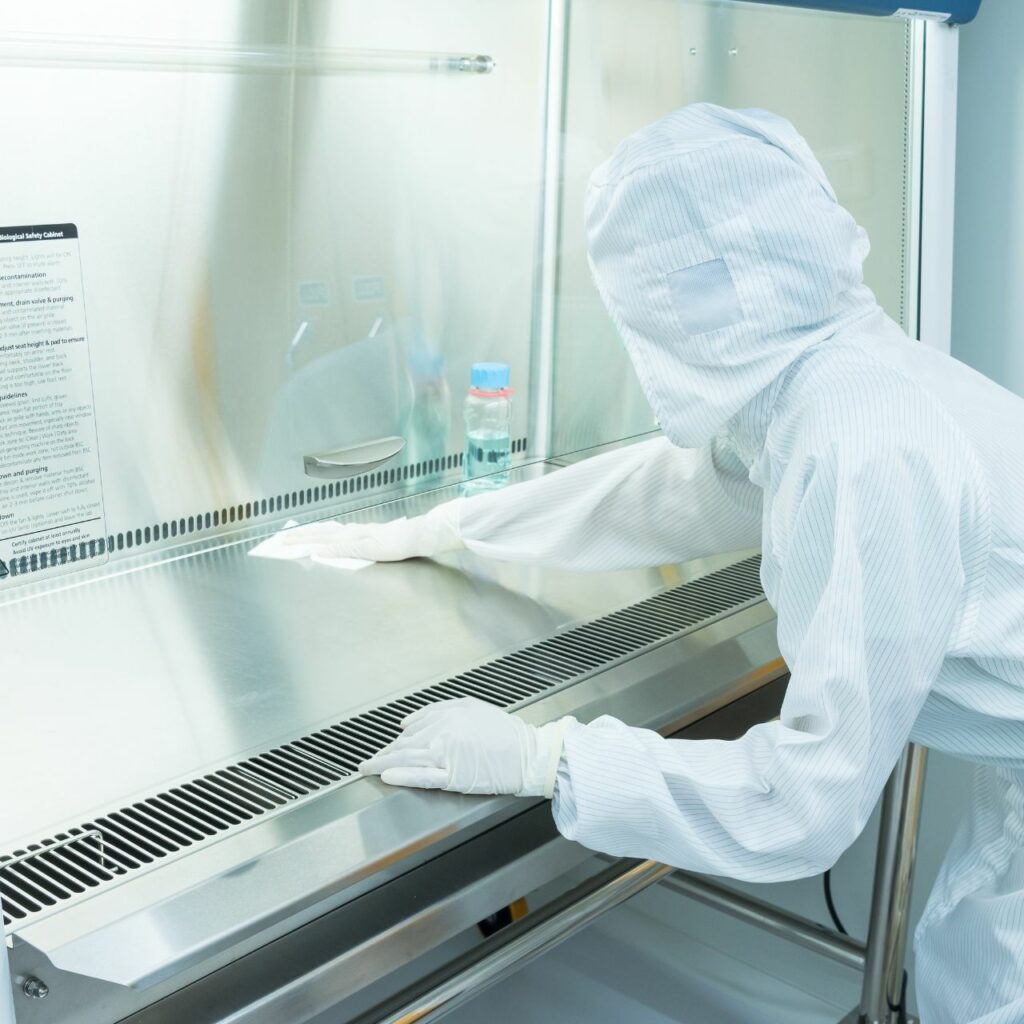Understanding Cleanrooms: An Essential Guide
Every environment has a certain level of pollutants, be it dust particles, microbes, or aerosols.
However, in some cases, these pollutants can have a significant detrimental impact on the quality of products or research.
To combat this, specialized environments known as cleanrooms are used.

Defining a Cleanroom
Looking to understand what a cleanroom is? A cleanroom is a meticulously structured environment that strictly controls and eliminates pollutants such as dust, airborne microbes, and aerosol particles. This specialized environment goes beyond just cleanliness; it meticulously manages additional variables such as temperature, humidity, and airflow, creating an environment fine-tuned to particular needs.
The primary role of these pristine spaces is to assure the top-level cleanliness vital for the high-quality production and safety of various products, including but not limited to electronic devices, pharmaceutical items, and medical equipment.
Let’s delve into the world of cleanrooms and understand their importance.
Cleanroom Classifications
Cleanrooms aren’t one-size-fits-all. They come in different classes depending on the number of particles allowed per cubic meter of air. The ISO standard 14644-1:2015 provides a classification of air cleanliness by particle concentration.
The Working Principle of Cleanrooms
The primary role of a cleanroom is to filter out pollutants and contaminants from the ambient air. This is achieved by passing the air through a specialized filter system. The filters, typically High-Efficiency Particulate Air (HEPA) or Ultra Low Penetration Air (ULPA), clean and decontaminate the air according to their specifications.
Once the air is processed, it is introduced into the controlled environment. A positive pressure is maintained within the cleanroom to keep the airflow directed outwards, preventing contaminated ambient air from entering. Any contamination generated within the cleanroom is flushed out and recirculated through the filters, restarting the process.
Specific cleanroom apparel and consumables are required to maintain the cleanliness of the environment.
Types of Cleanrooms
Cleanrooms are not restricted to a single type. Various types of cleanrooms are available, each designed for different applications and sizes. Some cleanrooms are modular in nature, allowing for easy reconfiguration and scalability. They can be designed to fit around existing machinery or facilities, making them a versatile solution for a wide range of needs.
Cleanroom Standards
Cleanroom standards ensure that these environments meet specific criteria for cleanliness and control. ISO 14644-1:2015 is the primary standard for cleanrooms, detailing the classification of air cleanliness by particle concentration. The standard defines cleanliness levels based on airborne particle counts, ensuring that every cleanroom meets the stringent requirements for control and cleanliness.
Who Needs a Cleanroom?
Cleanrooms are a necessity for industries where the presence of contaminants or particles can have a significant impact. These include:
- Manufacturing Companies
- Research Facilities
- Pharmaceutical Companies
- Medical Laboratories
- Electronic Part Production
- Aerospace Industry
- Nanotechnology production
- Optics and Lens Manufacturing
- Military Applications
If your manufacturing or research process is sensitive to contaminants, a cleanroom can provide the controlled environment needed to ensure the quality and safety of your work.
The Importance of Cleanrooms
The importance of cleanrooms in various industries cannot be overstated. They provide a controlled environment that eliminates contaminants, ensuring the quality of products and the accuracy of research. This is particularly important in industries like pharmaceuticals, electronics, and aerospace, where contaminants can lead to significant problems.
The Future of Cleanrooms
The future of cleanrooms is likely to be driven by technological advancements and an increasing need for controlled environments in various industries. As the demand for high-quality, contaminant-free products increases, so will the need for cleanrooms.
Conclusion
Cleanrooms play a critical role in many industries, offering a controlled environment where work can be carried out to the highest standards. Whether manufacturing a high-tech electronic device, developing new pharmaceuticals, or conducting ground-breaking research, cleanrooms provide the clean, controlled environment needed to ensure success.
Further Reading
For more information on cleanrooms and their applications, check out these resources:
Any company or research organization can ensure their products’ highest quality and safety and work with the right cleanroom. Find high-quality cleanroom supplies at Harmony Lab & Safety Supplies.
